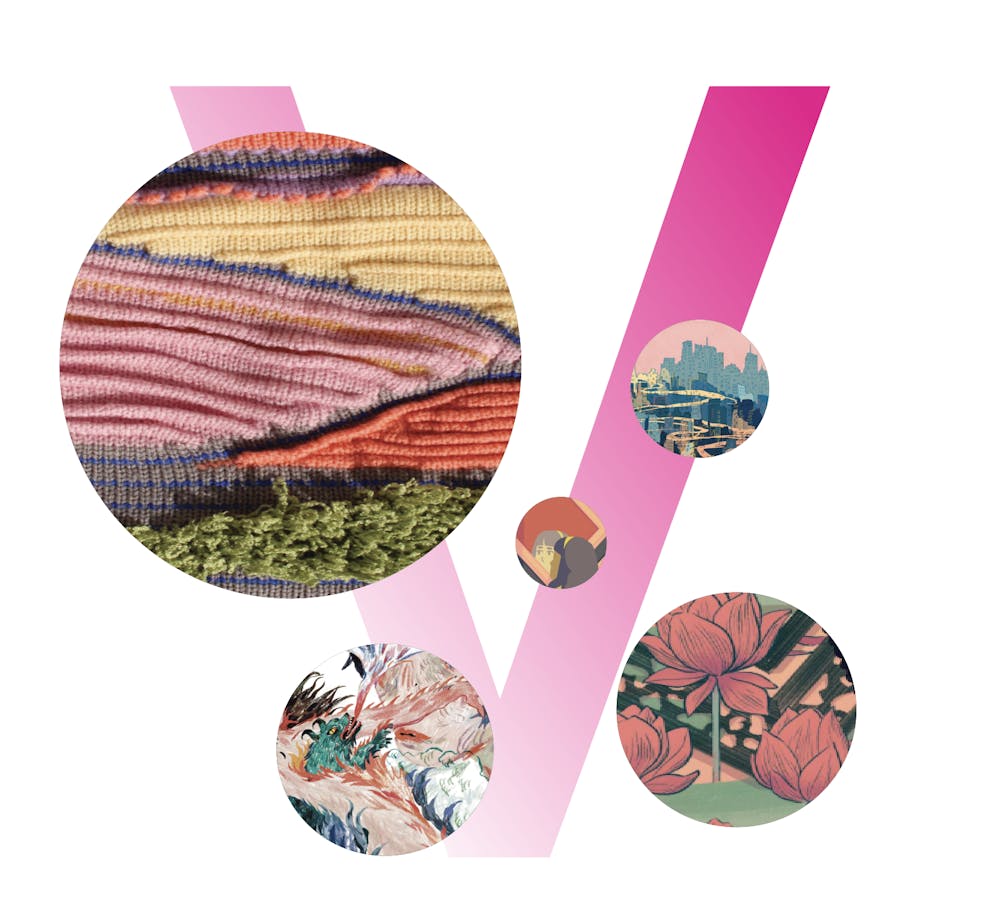VISIONS Magazine, a literary and visual arts student publication, celebrates Asian, Asian American and Pacific Islander diversity at Brown University and the Rhode Island School of Design.
Members of the VISIONS editorial board and one of its most recent contributors spoke with The Herald about the importance, the past and the future of the magazine.
Origins of VISIONS
According to the publication’s Spring 2006 issue, VISIONS started as an unofficial student group at Brown aiming to bring “together all the branches of the Asian American community.” Today, the magazine maintains the same mission, providing a unique literary and artistic forum for students to explore their AAPI identities.
Current Co-Editor-in-Chief Jo Ouyang ’26 joined VISIONS in their freshman year — during the COVID-19 pandemic — as a community engagement coordinator after a friend from high school encouraged them to participate.
“It was fun coming here and seeing the opportunity to put my art knowledge and experience into a magazine for a lot of Asian students to … curate together,” Ouyang said.
Anjali Shah ’25, an events coordinator for VISIONS, joined the magazine in her freshman year as the social media chair. Shah said she has “always been involved in telling Asian American stories.” She felt that the magazine considered the nuance “between Asian American activism and celebrating Asian joy,” which she hadn’t previously examined.
“It’s important to have spaces that are activism-focused and those that talk about the difficulty surrounding that,” Shah said, “but also spaces that are solely directed towards creativity.”
“There’s always this kind of tragic story of trauma (in) dealing with being Asian American or grappling with these cultures,” Ouyang said, “but not expressing more of the joyful parts of it.”
The evolution of VISIONS
Last semester, co-EICs Ouyang and Rachel Ly ’25 established a “vision for VISIONS,” Shah said, focused on “the people around the magazine.”
In line with such a vision, the organization has hosted new events ranging from workshops, a cold Asian drink drive and a screening of the Korean film “Train to Busan.” At the release party for the fall 2023 issue, VISIONS welcomed other student performance organizations like Barsaat, Moli and Brown Lion Dance.
VISIONS also held their first general body meeting last year, informing students of the magazine’s updates, the release party and upcoming events.
“It felt like this beautiful thing of all these people coming together,” Shah added. “I’m hoping that the general body develops more with people consistently coming to events.”
VISIONS Now
Pranav Gundrala ’25 submitted and performed his poem “American Lotus” for the magazine’s fall 2023 issue.
“I don’t tend to write work like that, but I thought it was important and it was something that I wanted to put out there,” Gundrala explained, highlighting the poem’s focus on South Asian identity.
“There’s an experience that’s shared by a lot of us that’s salient, and I think it’s not super well-represented in the literary community,” Gundrala said. Releasing that work on VISIONS, he said, felt “really welcoming and inviting.”
According to Ouyang , the publication “challenges AAPI stereotypes and common surface-level critiques by shifting the focus on the intersectional politics and identities we inhabit … There are queer Asian Americans, Black Asian Americans, disabled Asian Americans,” they said.
“It’s really important to have a creative outlet on campus, and to have a voice in forming the ways we think about Asian and Asian American identity,” Ouyang added.





